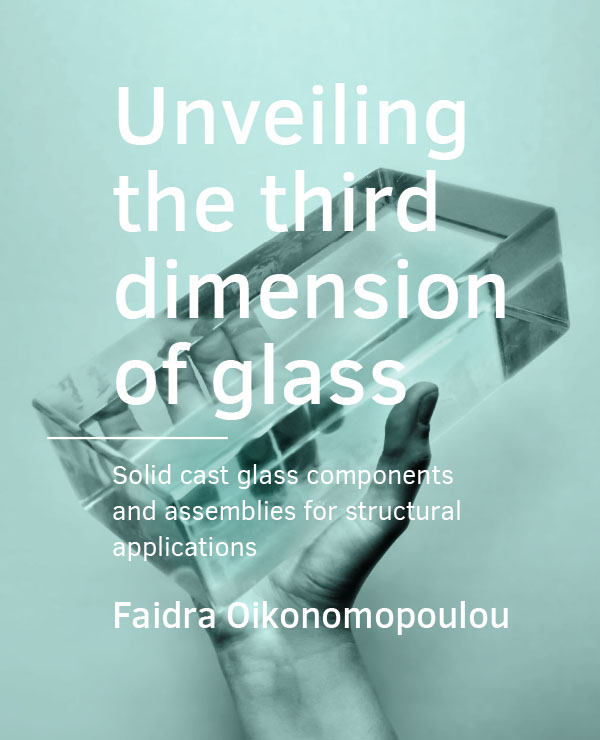Experimental and numerical investigation of an interlocking system out of osteomorphic cast glass components
DOI:
https://doi.org/10.7480/abe.2019.9.4094Abstract
The previous chapter concluded that blocks following an osteomorphic geometry are the most promising in respect to the principles of interlocking and glass casting. Moreover, interlayers of the polyurethane (PU) family are considered the most suitable for a building application, without compromising the transparency of the resulting structure. Based on these findings, this chapter aims at investigating the structural behaviour of an interlocking assembly employing osteomorphic blocks and PU as an interlayer. Initially, experimental research is conducted in different PU interlayers available in the market, aiming on finding one that fulfils the established design criteria and mechanical properties, as discussed in chapter 7.6. Different readily available two-component PU interlayers, with a Shore Hardness ranging between 60A – 80A, are cast to follow the osteomorphic interlocking geometry and are tested under static compressive load between two half osteomorphic kiln-cast glass blocks in series of 3 specimens and in 2 different thicknesses (3mm and 6mm). The results suggest that the tearing strength of the interlayer is as important as its Shore Hardness; whereas the geometry of the interlocking form can further influence the overall resistance of the assembly against tearing. They also highlight that insufficient contact (mismatch) of the interlayer with the glass blocks, due to dimensional deviations, can lead to the eventual failure of the assembly even under static load due to peak stresses that are further increased by the lateral stresses occurring due to the creep of the interlayer. From the examined interlayers, PU with a shore hardness between 70A – 80A, are considered as the most suitable for the further experimental validation of the assembly. Following, to investigate the influence of the interlocking mechanism to the structural behaviour of the proposed Thus, to further explore the influence of the most crucial geometrical aspects of the interlocking mechanism, namely the height and amplitude of the glass components, to the overall structural performance under shear a numerical model65 is made. In accordance with the output of the experimental validation, here an osteomorphic block with multiple locks is tested, considering a 4 mm thick 70A PU interlayer. The results of the numerical model indicate that bricks of reduced height are more susceptible to failure by bending, whereas with taller brick variants shear lock failure is more critical. It is also confirmed that an increased amplitude of the interlock can be beneficial as it leads to an increased shear capacity and lower uplifting effects. It is also shown that specimens with increased height reach the failure stress limit with considerably smaller deformations, thus, requiring a higher manufacturing precision.


